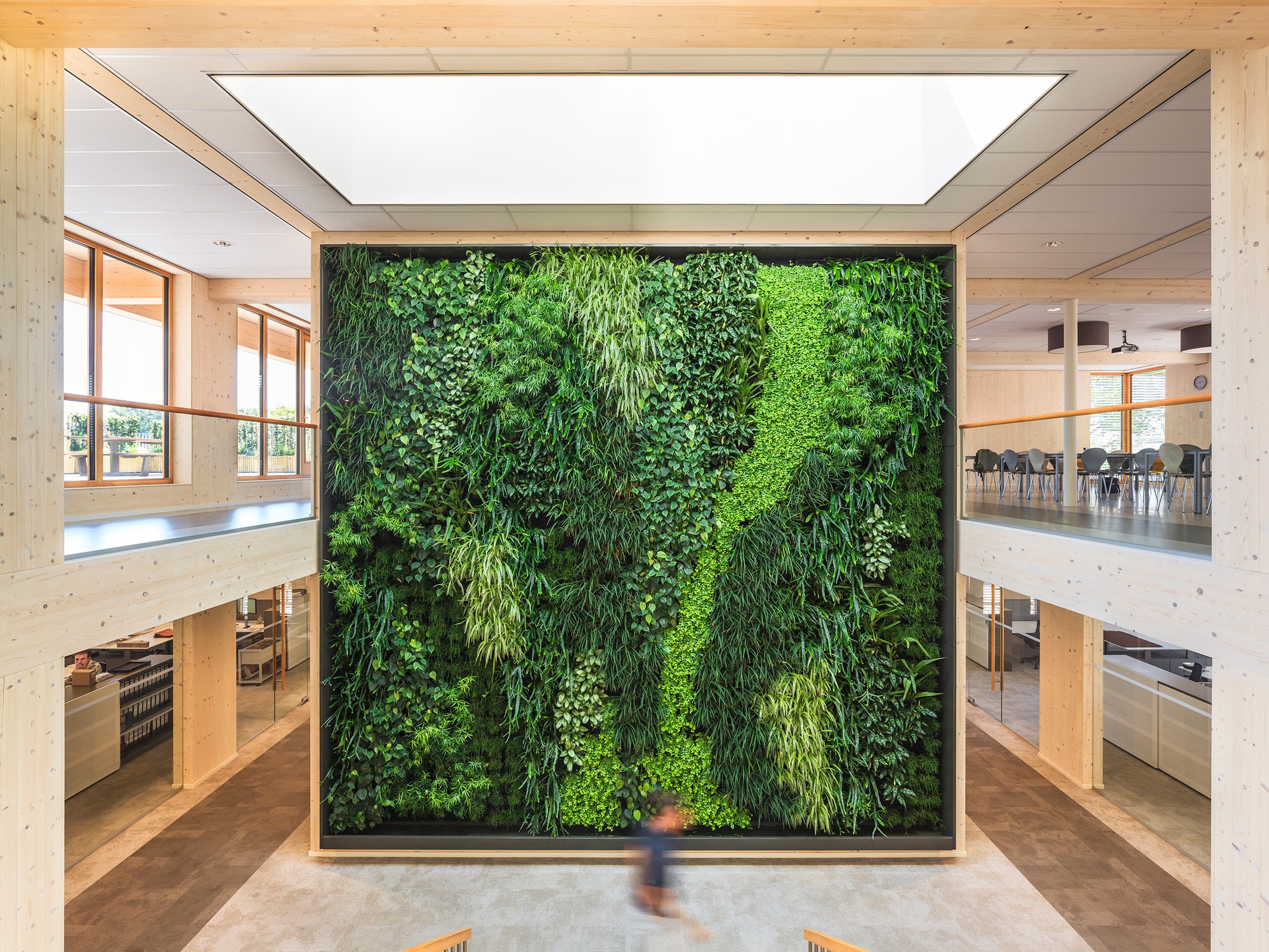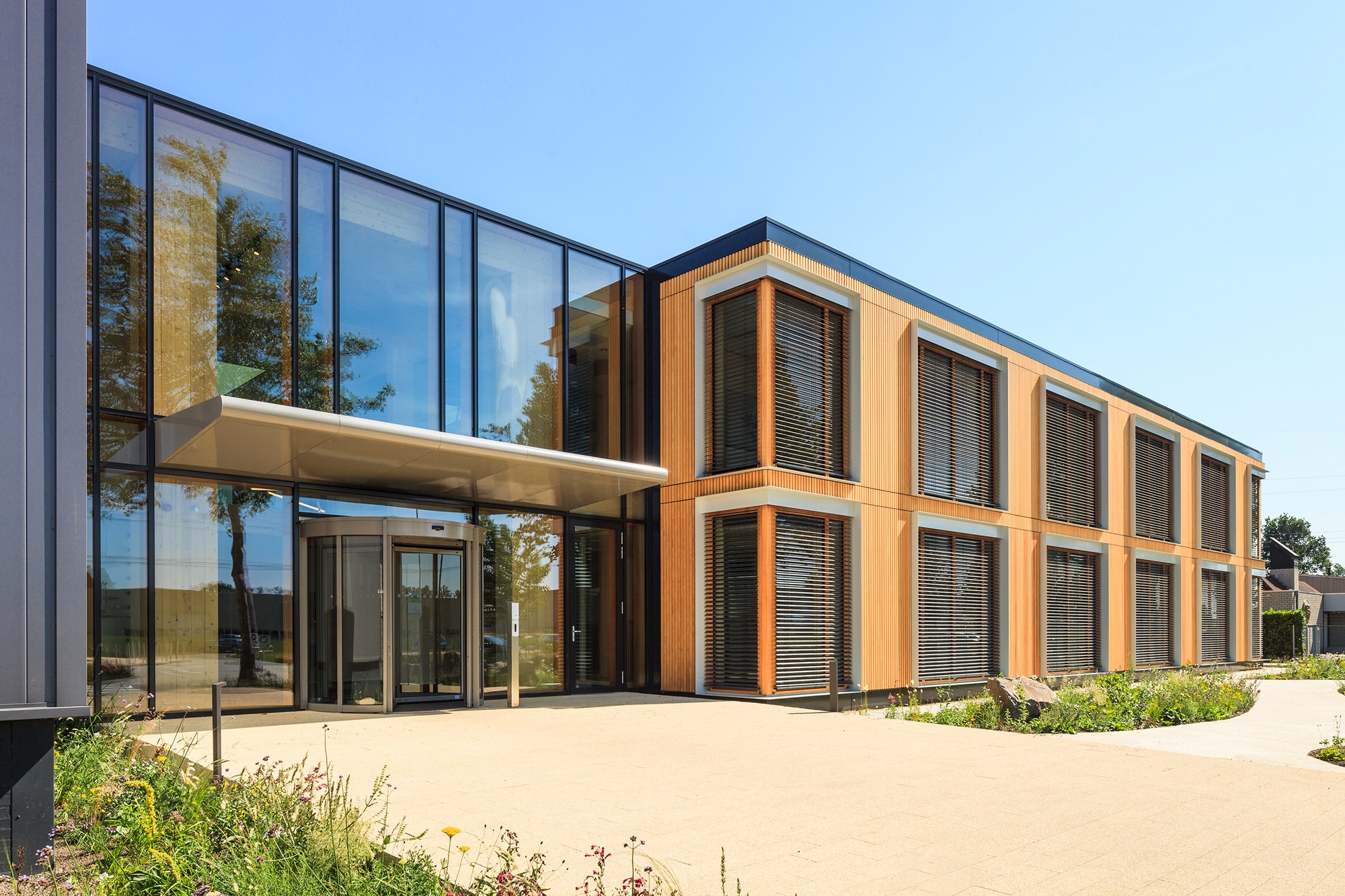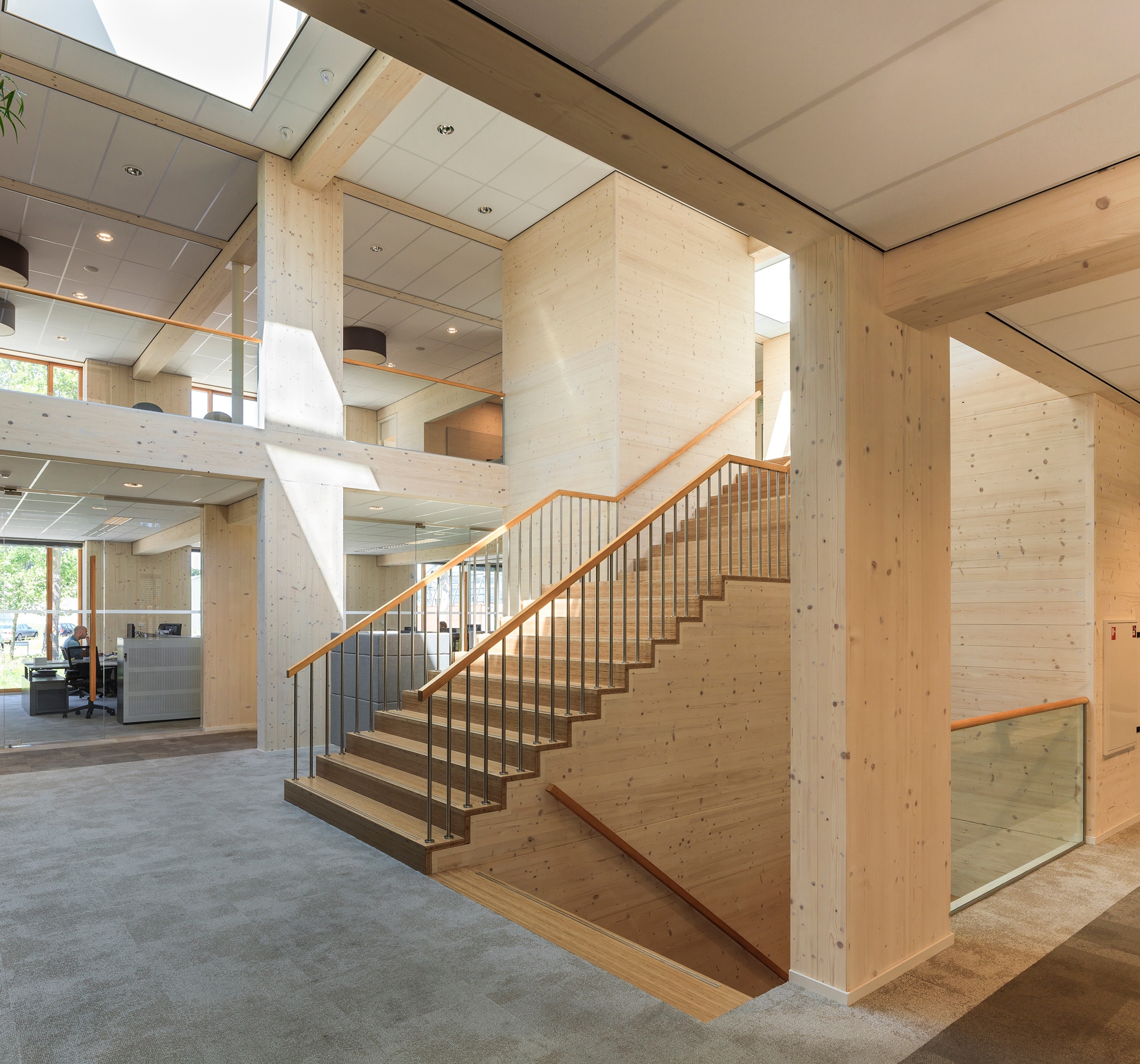
This Netherlands office combines greenery and high ceilings with solar panels and abundant natural light. [Photo: Courtesy of Geelen]
It has been called the greenest office in the world. Geelen Counterflow’s Netherlands office received a 99.94% BREEAM certification scheme ranking, the highest ever as of April 2016. This family business, which manufactures dryers and coolers for the food and feed industry, is already at the top of the green game, creating products that are energy-efficient and hygienic.
But as the company expanded to meet steady growth, the need for a new head office building became more than an opportunity to add space. This, says Counterflow’s managing director Sander Geelen, is all part of the company’s mission “to become 100% sustainable as soon as possible—office, factory, and products.”

[Photo: Courtesy of Geelen]
The problem today, as he sees it, is an “excessive emphasis on short-term financial goals [while] ignoring environmental and social impact…an excessive emphasis on energy consumption only, ignoring carbon footprint of the building or employee health.”
When approaching the build of their own office space, Counterflow took a new approach. The original site consisted of more than 107,000 square feet of production workshops and approximately 7,000 square feet of office space. Their goal with the new facility was to grow their capacity with an eye on the future, with enough room to expand over the next decade. At the same time, a big challenge would be to accommodate both the day-to-day work processes while increasing opportunities for employees to interact, benefiting from a design that maximized natural light, views, and comfortable acoustics.

[Photo: Courtesy of Geelen]
The design, crafted by Netherlands firm Architecten En Bouwmeesters, also needed to break down artificial barriers between office and workshop personnel. To do this, the design minimized the differences between the spaces, starting with making sure all employees accessed the building from the same entrance.
Convenience was also key, with functional areas like the reception, meeting and printing rooms, bathrooms, and a covered patio all easily accessible from the facility’s cafeteria, which also increased opportunities for interactions between employees at all levels.
The building’s airtight construction was similarly laser focused on the health and well-being of people and the environment, with timber pre-fabricated walls, floors, and roof assembled with beech dowels rather than chemical glues, sealed with linseed oil rather than chemical paints or finishes—all of which amounted to a negative CO2 footprint of 2,400 tons.

[Photo: Courtesy of Geelen]
Aesthetics go hand in hand with efficiencies in this facility, as large, high window openings allow both daylight and warmth to reach deep into the building, minimizing the need for more lighting, all of which is LED and controlled by sensors. Even the suspended ceilings, which allowed the concealment of air and cable ducts and provided sound absorption, were intentionally designed to maximize worker comfort.
The facility’s HVAC system today is its own technological feat, allowing temperature and CO2 concentrations in all rooms to be controlled and heat and humidity to be recovered, creating a thermal efficiency of more than 80%. Two ground source heat pumps generate the building’s heat and cold using the regulating power of the earth in different ways depending on the season.

[Photo: Courtesy of Geelen]
At the same time, solar thermal panels provide hot water to the kitchen and washrooms while rain is collected from the roof and used for flushing toilets and watering the building’s unique green wall.
And unlike some conventional office buildings, Counterflow’s solar panel system is more than a PR stunt. The 327W solar panels on the roof generate a full 50% more energy than the building needs.
At the end of the day, this impressive project was completed on a budget comparable to conventional building construction practices, Geelen says. However, the more impressive numbers were less tangible, measurable only in the motivation and attitude of employees and future impact on the environment. But that was the real goal. “Ecologic and economic goals should be and can be aligned,” he says. “Anything else is to profit now at the expense of future generations.”
